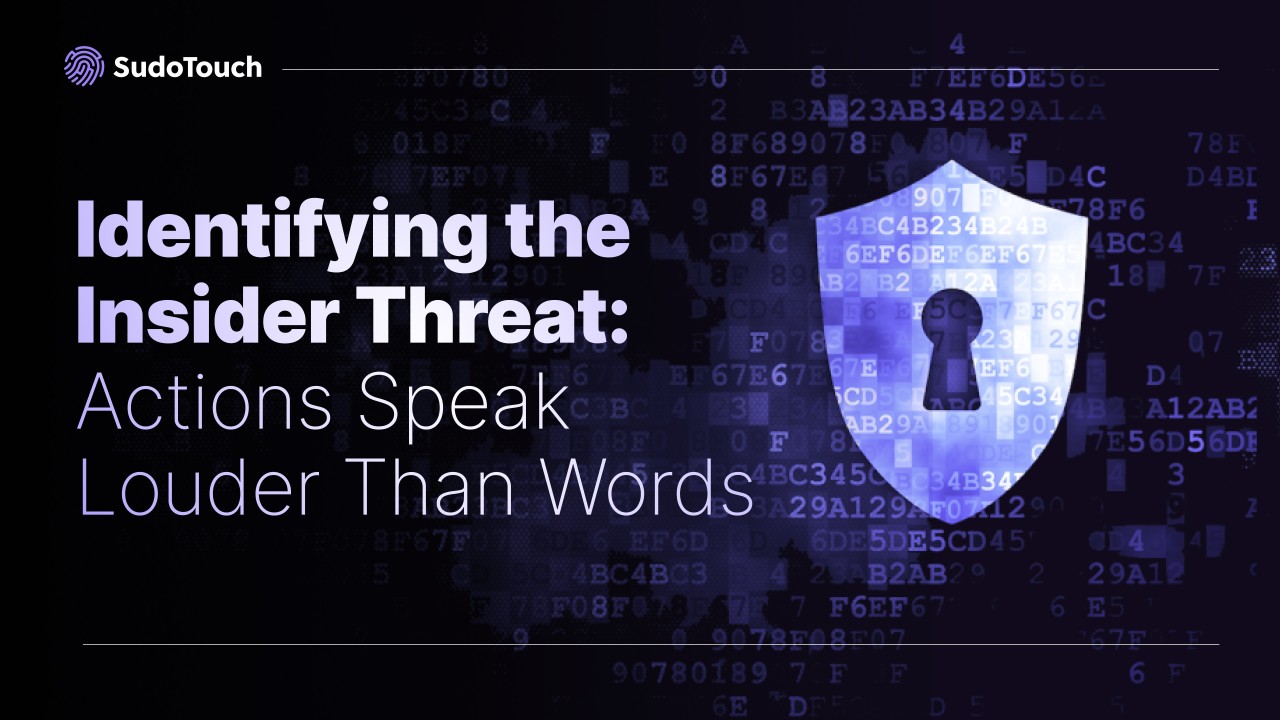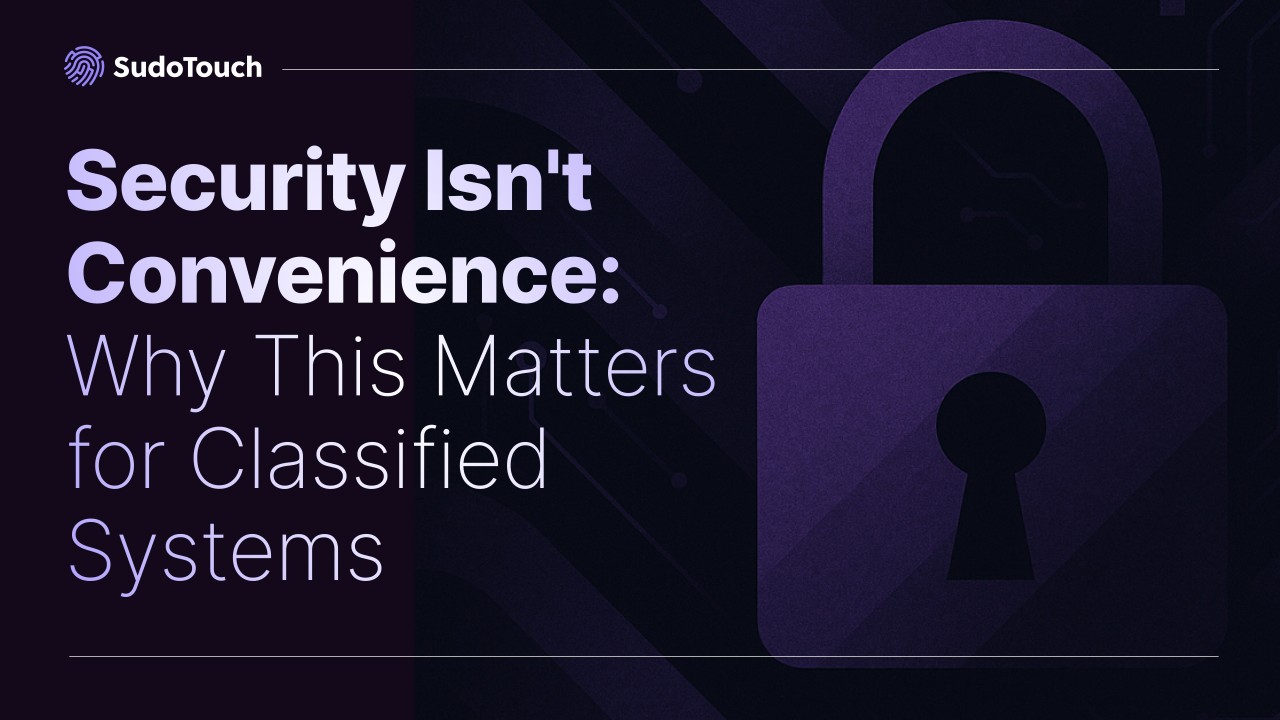In today's sensitive program environment, Special Security Officers (SSOs) face dual responsibilities: processing nominations efficiently while ensuring the integrity of classified programs. When these responsibilities compete for limited resources, the consequences of choosing convenience over thorough security protocols can be severe. As security professionals, we've long understood a fundamental truth: when it comes to identifying potential insider threats, actions speak louder than words.
The Silent Risk Within Administrative Workflows
Insider threats don't announce themselves with paperwork. Red flags rarely appear as obvious statements in applications. Instead, the evidence lies in behavioral patterns, inconsistencies across documents, and subtle indicators that require proper attention and analysis. As workloads grow and pressure mounts to move quickly, these critical security indicators can be missed when data can’t be analyzed with proper tools and support.
The starting point to vet insider threats begins with the nomination process for access to classified information. Because the process is rooted with a standardized series of background check methodologies and questions to the nominee, investigation is predictable. A hostile individual can intentionally craft their answers to align with favorable analysis outcomes, and even attempt to do so at geographically separated units due to lack of a centralized nomination analysis database.
Also consider the scenario of an excessively incompetent new hire, or a sudden shift in the work efficiency of an experienced technician. What could be the causal factor in excessive delays? The CIA’s declassified ‘Simple Sabotage Field Manual’ describes a variety of methods that an insider threat could employ to retain plausible deniability, mostly through the observer’s perception of incompetence instead of intent.
The challenge lies in recognizing the patterns that indicate not only risk, but also gross negligence, incompetence, or intentional obstruction. The risk is twofold: Nominees and Security Professionals.

Red Flags That Security Officers Should Never Miss
The most reliable way to identify potential insider threats during nomination processing is through consistent, methodical examination rather than expedited review.
Key actions that should trigger heightened scrutiny include:
- Unusual Access Request Patterns: Nominees seeking access to systems or data beyond their stated job requirements without clear consistent NTK
- Documentation Inconsistencies: Discrepancies between current and previous nomination packages, unexplained gaps, or anomalies that deviate from established norms can be hard to spot in analog environments.
- Circumvention Attempts: Pressure to bypass security protocols or expedite processing outside standard channels. With expedited requests these can become concerning.
- Concerning Personnel History: Previous security incidents, unreported foreign contacts, or financial irregularities that weren't properly addressed in prior reviews.
- Sponsor Behavior Changes: Unusual urgency from sponsors, resistance to providing additional documentation, or attempts to influence the nomination outcome.
Leveraging Technology for Security-First Processing
Modern tools allow SSOs to turn administrative workload into a strategic security advantage.
- Automated Comparison Analytic: Software that can instantly compare current nominations against previous submissions, flagging inconsistencies that might otherwise go unnoticed.
- Pattern Recognition: Advanced systems can detect subtle patterns across nominations that may indicate coordinated attempts to compromise program security.
- Historical Analysis: Tools that maintain comprehensive audit trails and historical records, enabling SSOs to make more informed decisions based on complete information.
- Workflow Management: Structured processes that ensure no critical security verification steps are skipped, even under pressure to expedite processing.
- Resource Optimization: Systems that handle routine tasks, freeing SSOs to focus their expertise on genuine security concerns rather than paperwork.
The Human Element in Security Decisions
While technology enhances capabilities, the security officer's judgment remains paramount. The most effective SSOs use processing tools not to accelerate approvals but to make better-informed security decisions. These tools should empower SSOs to:
- Identify concerning patterns across multiple nominations
- Conduct more thorough investigations when warranted
- Document security concerns with proper evidence
- Justify security-based decisions with comprehensive data
Making Security the Priority
The true measure of an SSO's effectiveness isn't the speed of nomination processing but the integrity of the programs they protect. By leveraging appropriate tools to handle administrative burdens, security officers can reclaim their primary role: ensuring that only properly vetted individuals access sensitive information.
Process with Purpose, Not Just Speed
As security professionals, we must recognize that prioritizing security over convenience is not an obstacle to mission success—it is essential to it. By implementing robust nomination processing tools, security officers can transform administrative requirements from burdens into security advantages that enhance their ability to protect vital programs.
Remember that every nomination represents a potential access point to sensitive information. The goal isn't just speed—it's accuracy. Every review action should be intentional and compliant to ensure the only the justified individuals with a need-to-know have access for the right reasons.








